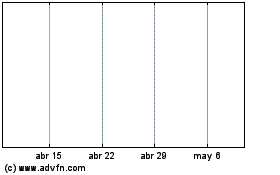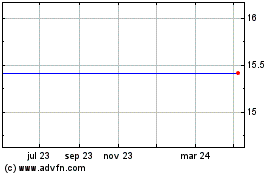Get a Car Deal with Fiat Chrysler -- Heard on the Street
17 Agosto 2020 - 8:54AM
Noticias Dow Jones
By Stephen Wilmot
Investors seem reluctant to pin much hope on the merger of Fiat
Chrysler and its French peer PSA. Yet its potential -- and
financial terms favorable to the Italian-American company -- will
become harder to ignore as the deal approaches the finishing
line.
Few people doubt that the car industry needs mergers. That is
particularly true in Europe, where the top three players had just
53% market share in the first half of the year and regulators are
promoting low-margin electric vehicles. Even before the coronavirus
struck, the industry consistently failed to make a reasonable
return on its vast capital employed.
Fiat Chrysler and PSA, which owns the Peugeot Citroën, Opel and
Vauxhall brands, expect to generate at least EUR3.7 billion ($4.38
billion) worth of cost savings through their merger. Taxed and
capitalized, these "synergies" could have a net present value of
roughly EUR15 billion, potentially adding more than 70% to the
companies' combined equity value (excluding payouts due to
shareholders before completion). But there isn't a trace of this
potential in their share prices, which have fallen with -- and in
PSA's case more than -- the wider sector since The Wall Street
Journal first reported the talks last October.
Investors' caution in attributing value to the deal is
understandable. They have been burned before, most notoriously when
Mercedes-Benz maker Daimler bought Chrysler in 1998. Volkswagen has
never translated its scale into superior returns. Closing car
factories tends to be extremely political. These are all good
reasons why investors prefer to see the fruits of a deal before
bidding stock prices up.
Yet this time really is different. The combined company, due to
be called "Stellantis," will be run by PSA's Carlos Tavares as
chief executive and Fiat Chrysler's John Elkann as chairman. The
men share an intense focus on capital allocation. Mr. Tavares has
achieved wonders at PSA, not least by buying the former European
business of General Motors and integrating its models onto PSA
platforms. Adding the underperforming European business of Fiat
Chrysler seems like a comparable job.
Scale has particular advantages as the industry grapples with
mounting technology costs. Last month PSA announced plans for a
dedicated electric-vehicle production platform. This investment was
likely easier to justify in view of the coming merger.
To be sure, Stellantis isn't a fast-moving story. The deal is
expected to close in the first quarter of 2021. Meanwhile, European
antitrust authorities are scrutinizing the companies' van
divisions, which would enjoy a more dominant market position than
their cars. There is a modest risk that the regulators weaken the
economics of the deal. Even if they don't, the companies expect to
take four years to achieve roughly 80% of the cost savings.
Yet there is also a short-term argument for buying into the Fiat
Chrysler side of the deal. The company's equity currently trades
roughly 5% below the value implied by the merger terms. This
discount is much narrower than it was in early April, when deal
spreads were wild across the board, but wider than it was before
the pandemic. The crisis has raised some doubts about the terms:
Can the company really afford to pay out a EUR5.5 billion cash
dividend before completion, as negotiated? But second-quarter
results were much better than expected, suggesting it probably
can.
Fiat Chrysler shares have something to attract patient and
impatient investors alike.
Write to Stephen Wilmot at stephen.wilmot@wsj.com
(END) Dow Jones Newswires
August 17, 2020 09:39 ET (13:39 GMT)
Copyright (c) 2020 Dow Jones & Company, Inc.
Stellantis NV (BIT:STLA)
Gráfica de Acción Histórica
De Mar 2024 a Abr 2024

Stellantis NV (BIT:STLA)
Gráfica de Acción Histórica
De Abr 2023 a Abr 2024
